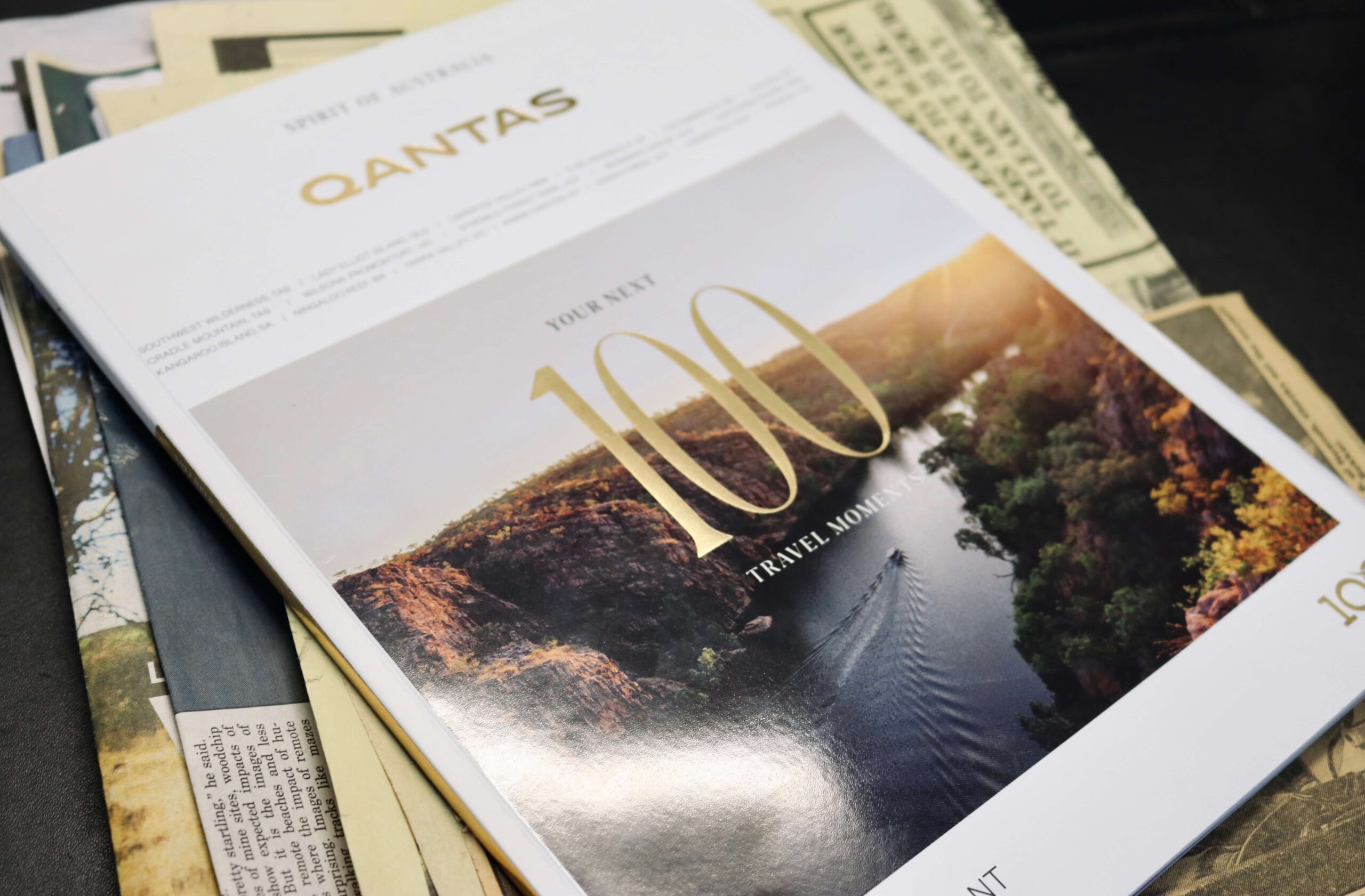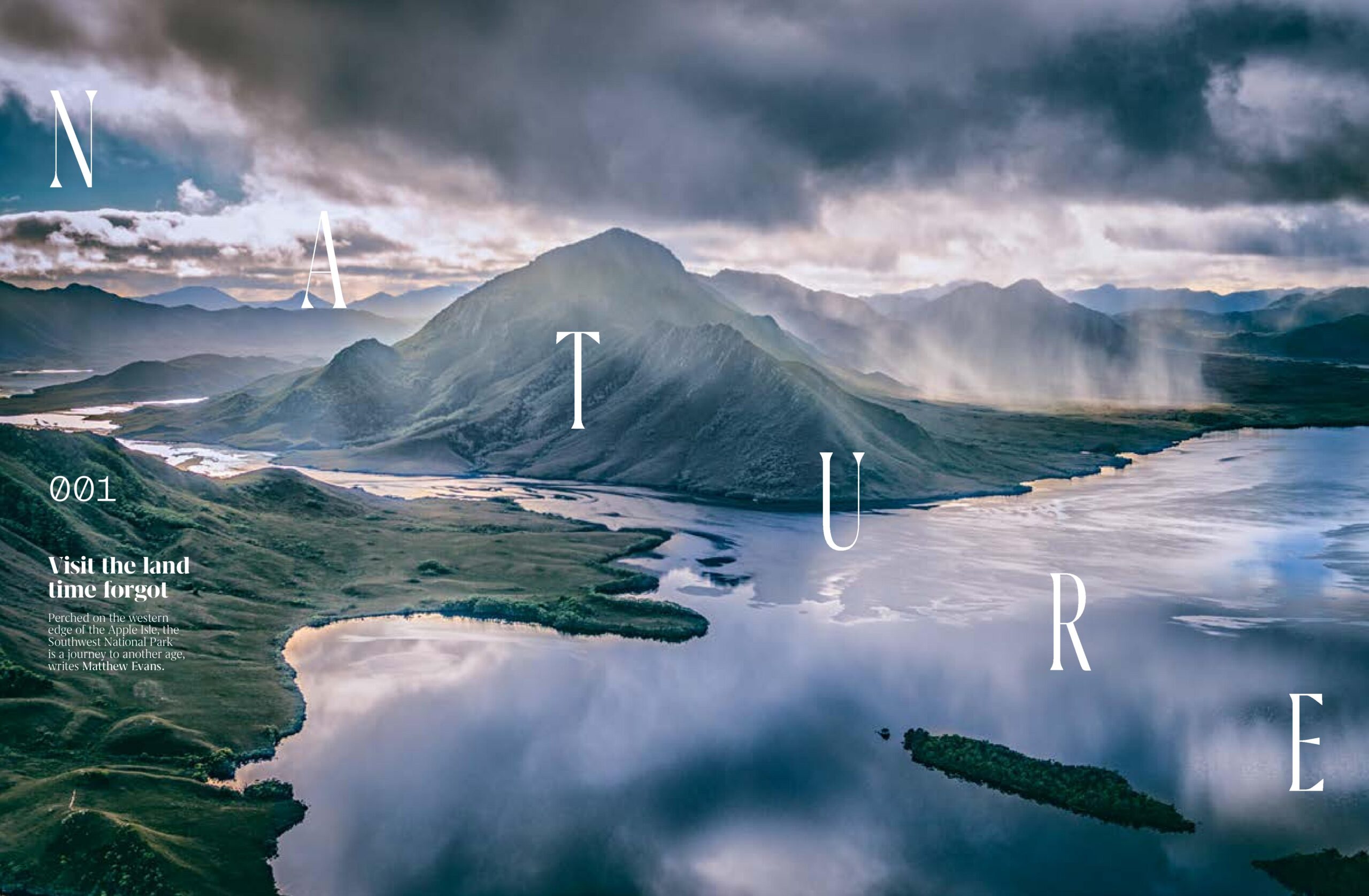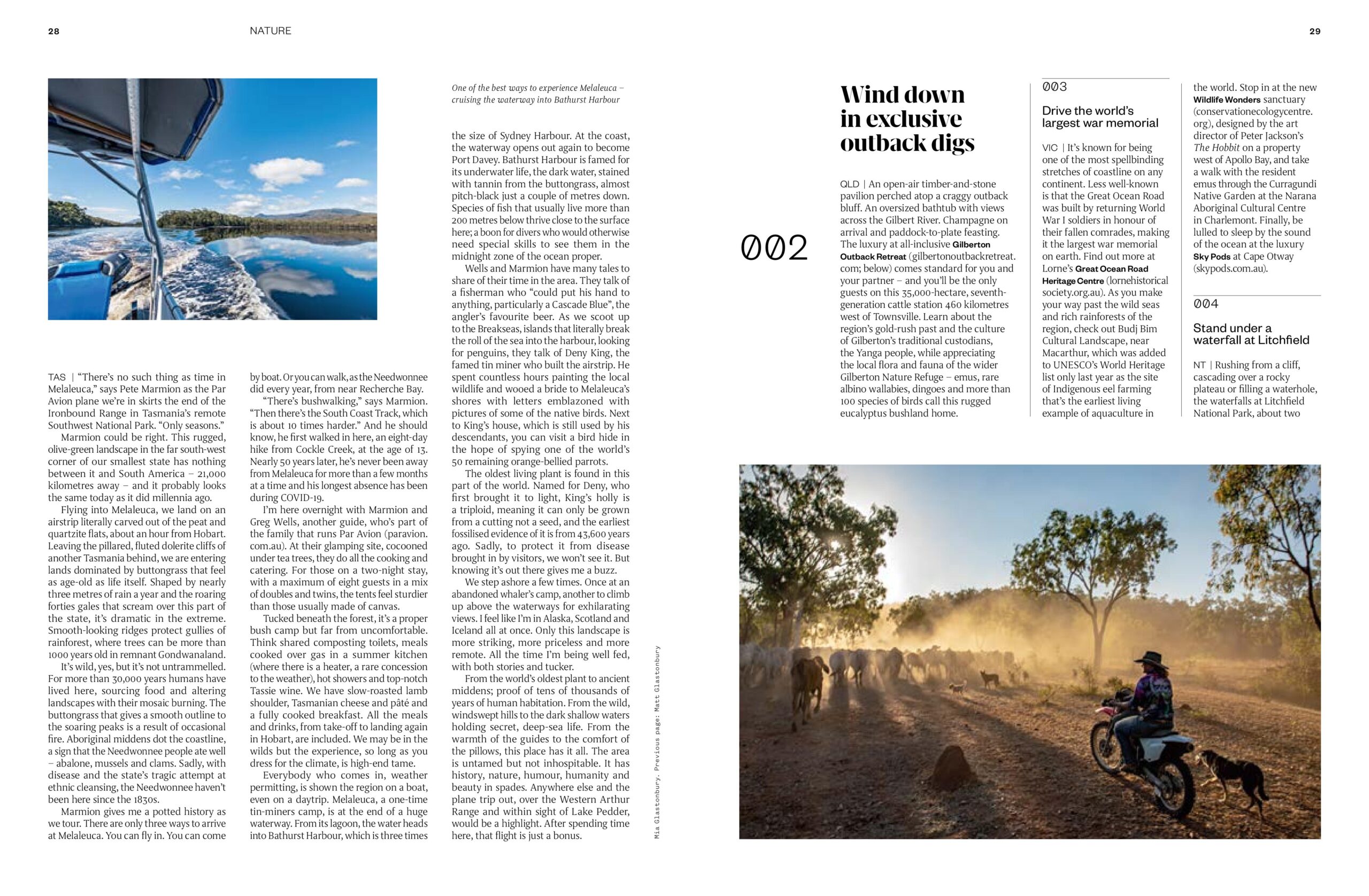Qantas Next 100 Travel Moments: #1
We’re thrilled to find our popular Southwest Wilderness Camp featured in Qantas Travel Insider Magazine‘s November 2020 issue as number one on their ‘next 100 Travel Moments’ list!

We’re in fine company alongside several of our fellow Tasmanian tourism friends, including Franklin River Rafting, MONA, Cradle Mountain-Lake St Clair National Park’s Overland Track, Launceston’s Gorge Scenic Chairlift, Barnbougle, Maria Island National Park, and Freycinet’s Saffire.
Perched on the western edge of the Apple Isle, the Southwest National Park is a journey to another age, writes Matthew Evans…
“There’s no such thing as time in Melaleuca,” says Pete Marmion as the Par Avion plane we’re in skirts the end of the Ironbound Range in Tasmania’s remote Southwest National Park. “Only seasons.”
Marmion could be right. This rugged, olive-green landscape in the far south-west corner of our smallest state has nothing between it and South America – 21,000 kilometres away – and it probably looks the same today as it did millennia ago.
Flying into Melaleuca, we land on an airstrip literally carved out of the peat and quartzite flats, about an hour from Hobart. Leaving the pillared, fluted dolerite cliffs of another Tasmania behind, we are entering lands dominated by buttongrass that feel as age-old as life itself. Shaped by nearly three metres of rain a year and the roaring forties gales that scream over this part of the state, it’s dramatic in the extreme. Smooth-looking ridges protect gullies of rainforest, where trees can be more than moo years old in remnant Gondwanaland.
It’s wild, yes, but it’s not untrammelled. For more than 30,000 years humans have lived here, sourcing food and altering landscapes with their mosaic burning. The buttongrass that gives a smooth outline to the soaring peaks is a result of occasional fire. Aboriginal middens dot the coastline, a sign that the Needwonnee people ate well – abalone, mussels and clams. Sadly, with disease and the state’s tragic attempt at ethnic cleansing, the Needwonnee haven’t been here since the 183os.
Marmion gives me a potted history as we tour. There are only three ways to arrive at Melaleuca. You can fly in. You can come
by boat. Or you can walk, as the Needwonnee did every year, from near Recherche Bay.
“There’s bushwalking,” says Marmion. “Then there’s the South Coast Track, which is about 10 times harder.” And he should know, he first walked in here, an eight-day hike from Cockle Creek, at the age of 13. Nearly 50 years later, he’s never been away from Melaleuca for more than a few months at a time and his longest absence has been during COVID-19.
I’m here overnight with Marmion and Greg Wells, another guide, who’s part of the family that runs Par Avion. At their glamping site, cocooned under tea trees, they do all the cooking and catering. For those on a two-night stay, with a maximum of eight guests in a mix of doubles and twins, the tents feel sturdier than those usually made of canvas.
Tucked beneath the forest, it’s a proper bush camp but far from uncomfortable. Think shared composting toilets, meals cooked over gas in a summer kitchen (where there is a heater, a rare concession to the weather), hot showers and top-notch Tassie wine. We have slow-roasted lamb shoulder, Tasmanian cheese and pâté and a fully cooked breakfast. All the meals and drinks, from take-off to landing again in Hobart, are included. We may be in the wilds but the experience, so long as you dress for the climate, is high-end tame.
Everybody who comes in, weather permitting, is shown the region on a boat, even on a daytrip. Melaleuca, a one-time tin-miners camp, is at the end of a huge waterway. From its lagoon, the water heads into Bathurst Harbour, which is three times the size of Sydney Harbour. At the coast, the waterway opens out again to become Port Davey. Bathurst Harbour is famed for its underwater life, the dark water, stained with tannin from the buttongrass, almost pitch-black just a couple of metres down. Species of fish that usually live more than zoo metres below thrive close to the surface here; a boon for divers who would otherwise need special skills to see them in the midnight zone of the ocean proper.
Wells and Marmion have many tales to share of their time in the area. They talk of a fisherman who “could put his hand to anything, particularly a Cascade Blue”, the angler’s favourite beer. As we scoot up to the Breakseas, islands that literally break the roll of the sea into the harbour, looking for penguins, they talk of Deny King, the famed tin miner who built the airstrip. He spent countless hours painting the local wildlife and wooed a bride to Melaleuca’s shores with letters emblazoned with pictures of some of the native birds. Next to King’s house, which is still used by his descendants, you can visit a bird hide in the hope of spying one of the world’s 5o remaining orange-bellied parrots.
The oldest living plant is found in this part of the world. Named for Deny, who first brought it to light, King’s holly is a triploid, meaning it can only be grown from a cutting not a seed, and the earliest fossilised evidence of it is from 43,600 years ago. Sadly, to protect it from disease brought in by visitors, we won’t see it. But knowing it’s out there gives me a buzz.
We step ashore a few times. Once at an abandoned whaler’s camp, another to climb up above the waterways for exhilarating views. I feel like I’m in Alaska, Scotland and Iceland all at once. Only this landscape is more striking, more priceless and more remote. All the time I’m being well fed, with both stories and tucker.
From the world’s oldest plant to ancient middens; proof of tens of thousands of years of human habitation. From the wild, windswept hills to the dark shallow waters holding secret, deep-sea life. From the warmth of the guides to the comfort of the pillows, this place has it all. The area is untamed but not inhospitable. It has history, nature, humour, humanity and beauty in spades. Anywhere else and the plane trip out, over the Western Arthur Range and within sight of Lake Pedder, would be a highlight. After spending time here, that flight is just a bonus.


